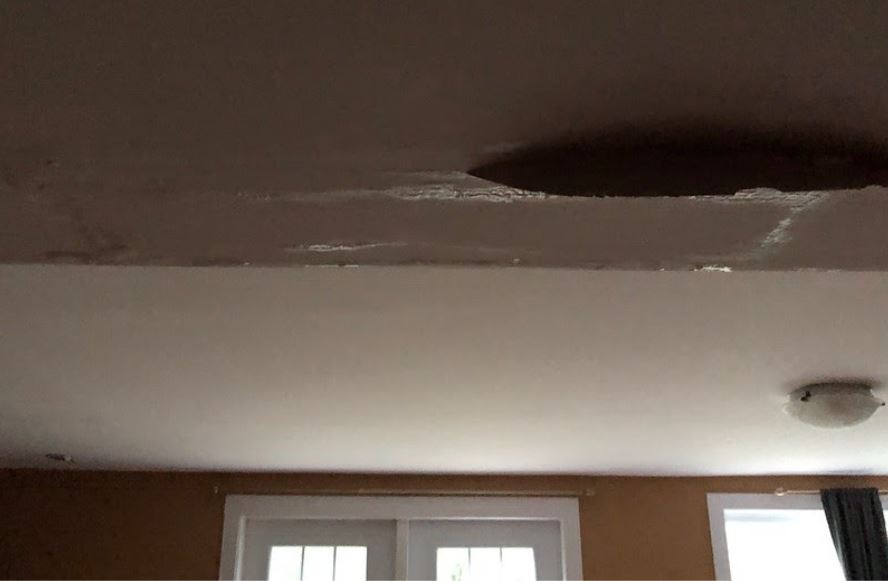Unveiling the Primary Sources of Water Leaks Within The Home
Unveiling the Primary Sources of Water Leaks Within The Home
Blog Article
Are you trying to locate suggestions concerning Common Water Leaks In House?

Leakages not just cause waste of water yet can likewise cause unnecessary damages to your residence and also advertise unwanted natural development. Unfortunately, water leakages could go unnoticed given that the majority of the pipework in our residence is concealed. By comprehending and looking for day-to-day situations that trigger leaks, you can secure your home from future leakages and also unnecessary damages. Today, we will certainly consider 6 leakage creates that may be triggering your pipelines to trickle.
Trespassing roots
The majority of water leaks start outside your house rather than inside it. If you observe an unexpected decrease in water stress, claim in your tap, take some time to go out and examine your backyard. You could see wet patches or sinkholes in your backyard, and that could mean that tree origins are attacking water lines triggering water to permeate out. You can have your plumber look for invasion, particularly if you have trees or hedges near your home.
Corroded water supply
As time goes by, your plumbing system ages and rust such as corrosion may start gnawing the pipelines. This may be the root cause of staining or warping on your pipes. This calls for an assessment with your plumber quickly. Consider changing the pipes because they are at a higher risk of rust than the newer versions if our plumbing system is old.
Faulty Pipe Joints
The factor at which your pipelines link is often the weakest link in the waterline. Pipe joints can deteriorate in time, leading to water leakages. The majority of pipe joints are not easily noticeable. If you have loud pipelines that make ticking or banging sounds, particularly when the warm water is switched on, your pipe joints are most likely under a lot of stress. It is a good idea to have your plumber check your system yearly.
Instantaneous temperature level modifications.
Severe temperature adjustments in our pipelines can trigger them to expand as well as get unexpectedly. This expansion as well as tightening may trigger fractures in the pipes, especially if the temperature are below freezing. If you kept an eye on how your plumbing works, it would be best. The presence of the previously mentioned conditions often shows a high threat.
Poor Water Connectors
At times, a leak can be caused by loose hose pipes as well as pipelines that provide your devices. In situation of a water links leakage, you might observe water running directly from the supply line or puddles around your home appliances.
Blocked Drains
Clogged drains pipes could be frustrating and also inconveniencing, however they can sometimes end up creating an overflow causing rupture pipelines. Keep eliminating any type of materials that may go down your drains pipes that can clog them to prevent such troubles.
All the above are root causes of leakages yet not all water leaks result from plumbing leaks; some leakages could come from roof leakages. All leakages ought to be fixed immediately to prevent water damage.
Leaks not only create waste of water yet can also create unneeded damages to your house as well as promote undesirable organic development. By looking and recognizing for daily scenarios that trigger leaks, you can secure your house from future leaks as well as unneeded damages. Today, we will certainly look at six leak triggers that might be triggering your pipes to drip.
At times, a leak can be triggered by loose hose pipes as well as pipelines that supply your devices. In case of a water connections leak, you may see water running straight from the supply line or puddles around your appliances.
How To Check For Water Leak In Your Home
How To Check for Leaks
The average household's leaks can account for nearly 10,000 gallons of water wasted every year and ten percent of homes have leaks that waste 90 gallons or more per day. Common types of leaks found in the home are worn toilet flappers, dripping faucets, and other leaking valves. These types of leaks are often easy to fix, requiring only a few tools and hardware that can pay for themselves in water savings. Fixing easily corrected household water leaks can save homeowners about 10 percent on their water bills.
To check for leaks in your home, you first need to determine whether you're wasting water and then identify the source of the leak. Here are some tips for finding leaks:
Take a look at your water usage during a colder month, such as January or February. If a family of four exceeds 12,000 gallons per month, there are serious leaks.
Check your water meter before and after a two-hour period when no water is being used. If the meter changes at all, you probably have a leak.
Identify toilet leaks by placing a drop of food coloring in the toilet tank. If any color shows up in the bowl after 10 minutes, you have a leak. (Be sure to flush immediately after the experiment to avoid staining the tank.)
Examine faucet gaskets and pipe fittings for any water on the outside of the pipe to check for surface leaks.
Undetected water leaks can happen without the home or business owner even realizing. If you suspect a water leak, but not able to find the source. It is time to contact a professional water leak detection service, The Leak Doctor.
How To Find a Water Leak In Your Home
https://www.leakdoctor.com/blog/How-To-Check-For-Water-Leak-In-Your-Home_AE197.html

I stumbled upon that blog posting on How to detect water leaks in your home while browsing the web. Kindly set aside a second to promote this blog entry if you appreciated it. Thank you for going through it.
Water woes? Connect. Report this page